by Jude Rogers.
14. Shore Lines.
Out of the blue, work takes me to Yorkshire, to interview a grand old lady of folk music on a darkening June evening. First I race along the fast, clacking lines of the East Coast Main Line to York, then I change for the Trans-Pennine to Scarborough. Then the number 93 bus – known locally as the Seasider – meanders languorously through the moors, before I arrive at Robin Hood’s Bay.
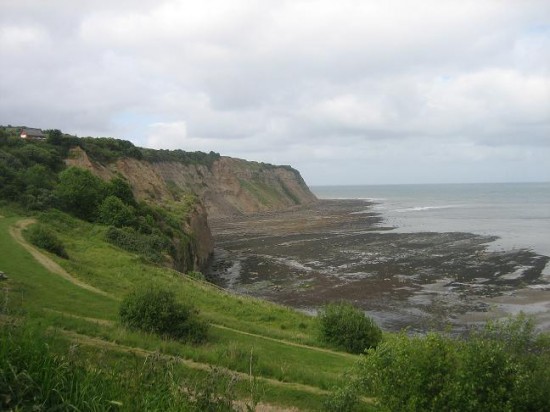
I check into my B&B, lie for a moment on my pillows, and fill in a form for smoked kippers and egg in the morning. Then I put on my cheap patent shoes and my old denim jacket, and wander out into the sky, and the air, and the sea.
a. Robin Hood’s Bay is a fishing village five miles south of Whitby. It is a place known for hoary stories of smugglers and pirates, and the ferocious tides that have carved curves and right angles into the shore. I am staying in Mount Pleasant, way up on the hill, five minutes walk from its more famous cobbled streets. As I walk down, the sun shines, and every passerby smiles at me.
Just before I reach the old village, a red ball with short legs sits by the path, a white circle in its belly which is asking for money. I read the Shipwrecked Mariners Society sign on it, Letrasetted in bright blue, and remember not everything around here is always this lovely.
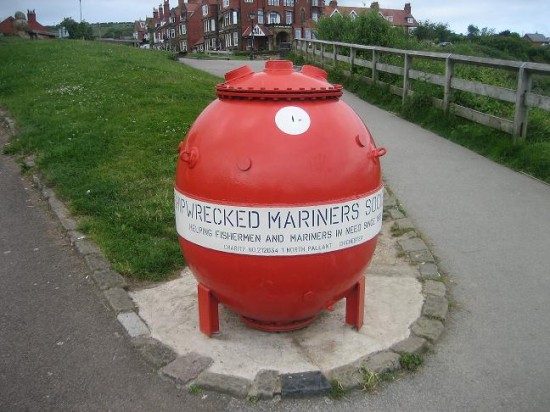
b. As I head towards the sea, the pavements start to incline steeply. Walkers approach me with their rucksacks and staffs, puffing slowly uphill, and I stand to the side, like an old motor pulling into a layby. Gift shops start to pop up like pastel-coloured boiled sweets, old-fashioned and impeccable, selling trinkets and rulers and crystals and ice-creams.
The houses here are sometimes almost too perfect, rising and falling in higgledy-piggledy humps. On a road called Sunny Place, flowers and leaves curl daintily around the windows; perfect ornaments above the plastic boxes advertising these houses for rent. For a while, it is hard to find a house without them. I only find a few oddities: one door with cracked paint, falling like blood from the letterbox, and Russian dolls that have sneaked past a net curtain to sit in a dirty window.
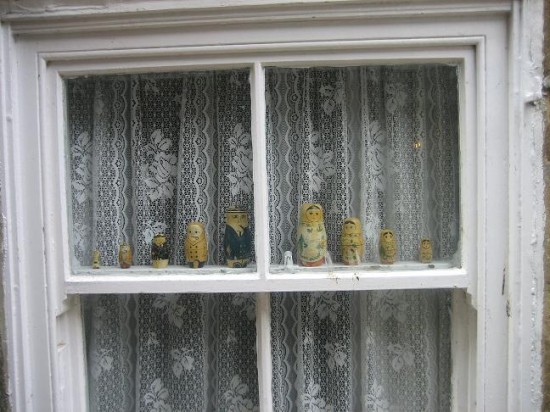
d. Down the hill, more paths dart and weave from every gap between the buildings, and I find myself willingly getting lost in their mazes. I reach The Bay Hotel, the last pub before the sea, and here I find another collection of warnings. A red sign telling me that the tides often restricts access to this slipway – I then strain to see the water, so far away I can barely see it – and an old lifeboat that looks it could hardly withstand me leaning on its stern. Then there is a mournful fish sitting inside a rusty cage by the sea wall, asking me to give donations to the RNLI. Just beyond that, the sandy banks, the mossy green, the sturdy boots. I look down at my shoes – bought for £10 in Peacocks – look again at these messages, and decide it’s best not to be brave.
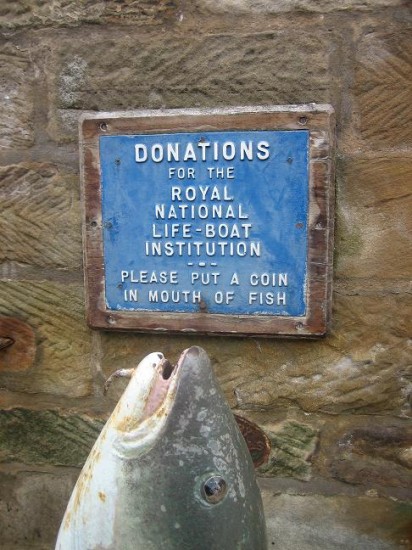
e. On the way back, lilac clouds start to gather. As I go into first gear, I see the Memory Box photo shop, which tells me it will “capture a moment in time with a portrait to treasure”. Its windows are full of brightly-lit seaside scenes shot in the great indoors. Further up is a police station which used to house two prison cells, built to restore law and order in Victorian times – especially among boozy railway workers who enjoyed Saturday night fights, and were known around the area for their “broken heads” and “drunken legs”. Now, almost inevitably, it is “an interesting base for two families”.
I move away from these streets, an odd feeling in my bones, and crave a moment alone to take in this wild place alone. Behind a café car park, I find a cliff edge with three benches, all dedicated to people who used to do the same thing. I think of Roger Gardner, 1953-2007 – younger than my own mother – forever in our hearts, and always in our thoughts. I think of George Royden and Ena Richardson, and wonder if they were friends, or if she kept her name.
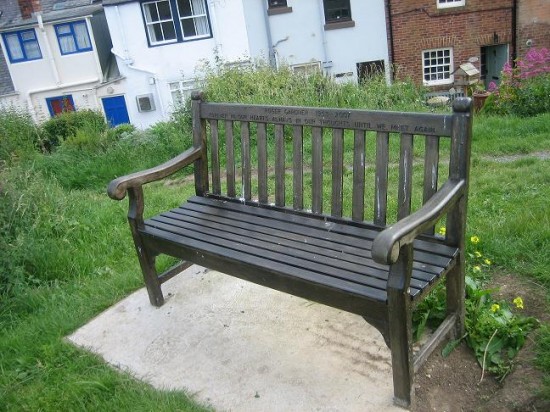
Then I look out and think of nothing but the shape of the land, its colours and its contours, and how all of this must have changed over time. I let the wind take my hair, the light widen my eyes, and let all other things fall away from me.